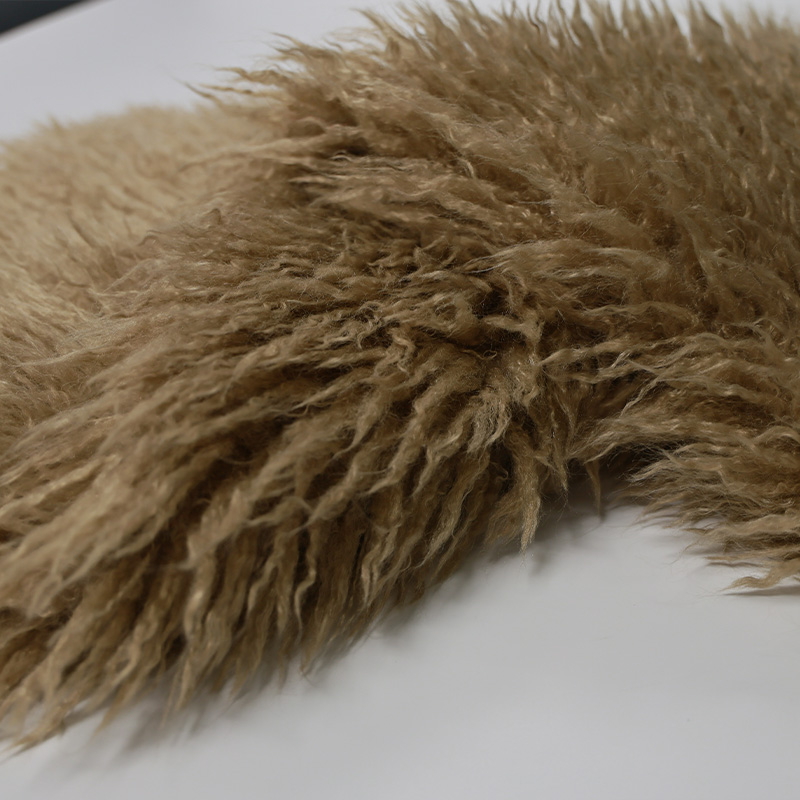











Imitation lamb fur has gained significant traction in the fashion and textile industry, primarily due to its cost-effectiveness, versatility, and ability to mimic the appearance of natural fur. However, like any synthetic material, it comes with its own set of limitations that can impact its use and appeal in various applications. This article aims to assess the limitations of imitation lamb fur in fashion and textile applications, providing a balanced perspective on its strengths and weaknesses.

Durability and Wear and Tear
One of the primary limitations of imitation lamb fur is its durability. While advancements in technology have improved the lifespan of synthetic materials, they still lag behind natural fur in terms of resilience to wear and tear. Imitation lamb fur may show signs of fading, pilling, or matting over time, especially with frequent use and exposure to harsh conditions. This can detract from its appearance and reduce its overall lifespan, making it less suitable for high-wear applications.
Temperature Regulation
Another limitation of imitation lamb fur is its ability to regulate temperature. Natural fur has a unique ability to adapt to different environments, providing warmth in cold conditions and allowing air circulation in warmer climates. Imitation lamb fur, however, may not offer the same level of temperature regulation. It can trap heat, making it less comfortable in warmer weather, and may not provide adequate insulation in extremely cold conditions. This can limit its use in clothing and accessories designed for a range of climates.
Tactile Experience
The tactile experience of imitation lamb fur can also be a limitation for some consumers. While advancements in technology have improved the softness and texture of synthetic materials, they may still lack the natural feel of real fur. Consumers who prioritize the tactile experience of their clothing and accessories may find imitation lamb fur lacking in this respect, preferring the authentic touch of natural fur.
Appearance and Authenticity
Appearance is a crucial factor in fashion and textile applications, and imitation lamb fur can sometimes struggle to match the authenticity of natural fur. While high-quality synthetic materials can closely mimic the appearance of natural fur, they may still lack the depth, texture, and nuanced color variations that are present in real fur. This can be particularly noticeable in high-end fashion and luxury markets, where consumers are more discerning about the authenticity and quality of materials.
Allergies and Sensitivity
Another limitation of imitation lamb fur is its potential to trigger allergies or sensitivities in some individuals. Synthetic materials can contain chemicals, dyes, and finishes that may irritate the skin or cause allergic reactions. While natural fur is also not hypoallergenic, it may be less likely to cause reactions due to its natural composition. This can be a concern for consumers with sensitive skin or allergies to synthetic materials.
Production and Environmental Impact
While this article focuses specifically on limitations related to fashion and textile applications, it is worth noting that the production of imitation lamb fur can have environmental impacts. The manufacturing process may involve chemicals and energy-intensive processes that can contribute to pollution and resource depletion. While these concerns are outside the scope of this discussion, they are worth considering when assessing the overall sustainability of synthetic materials.
Conclusion
In conclusion, imitation lamb fur has its own set of limitations in fashion and textile applications. Its durability, temperature regulation, tactile experience, appearance, and potential for triggering allergies or sensitivities can all impact its suitability for different uses. Despite these limitations, imitation lamb fur continues to be a popular choice in the fashion and textile industry due to its cost-effectiveness and versatility. Manufacturers and designers must carefully consider these limitations when developing products, ensuring that they meet consumer expectations and stand up to the rigors of daily use.